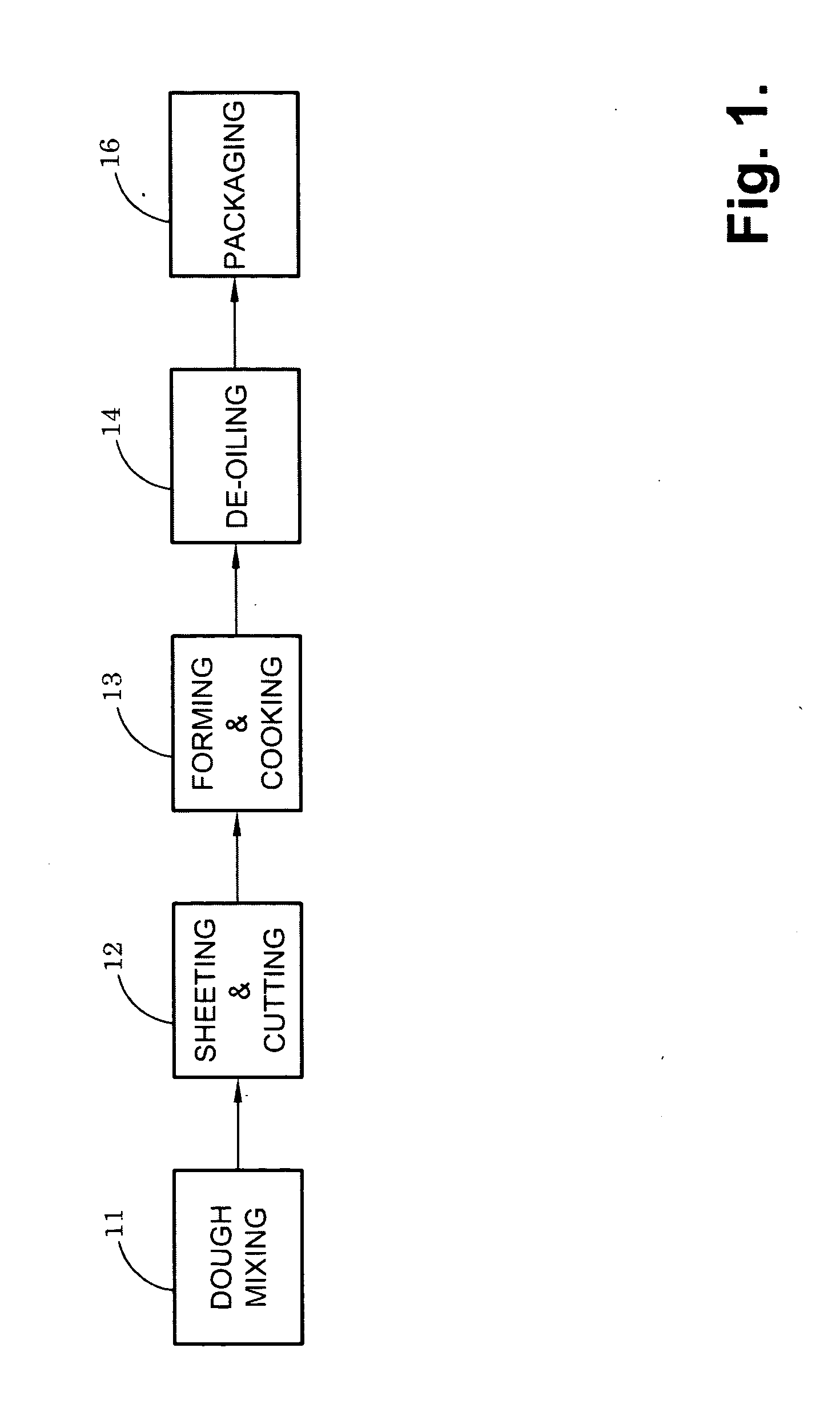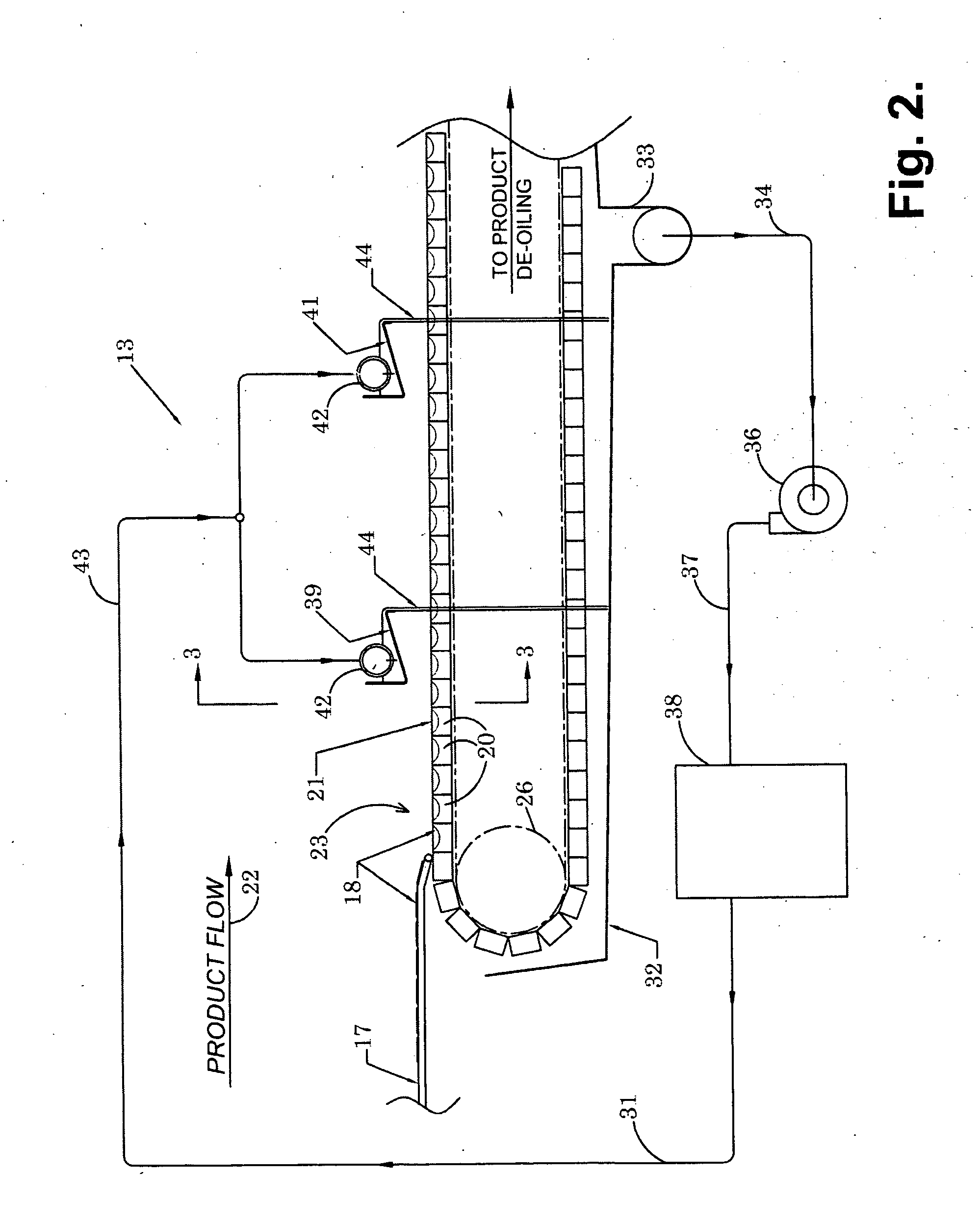Forming and cooking with controlled curtain spillage
a technology which is applied in the field of forming and cooking with controlled spillage, can solve the problems of high mold cost, high maintenance cost, and complex ensuring, and achieve the effects of enabling food product forming, high efficiency, and improving the ratio of cooking oil volume to product throughpu
- Summary
- Abstract
- Description
- Claims
- Application Information
AI Technical Summary
Benefits of technology
Problems solved by technology
Method used
Image
Examples
Embodiment Construction
[0028] Referring to the drawings, there is shown in FIG. 1 a schematic diagram which enables the practice of the invention and includes dough and mixing stage 11, a sheeting and cutting stage 12, a forming and cooking stage 13, a product de-oiling stage 14 and a packaging or other final processing stage 16.
[0029] The dough mixing stage 11 is significant in that it has been found that the process of this invention is most successfully applied to “fabricated snack food products” such as potato chips or crisps and Mexican style snack foods made from a corn masa including shells for tacos, tostadas and similar items. To that end recipes well known in the field may be successfully adopted and adjusted as experience dictates so as to produce a potato dough or a corn masa, or a wheat based dough as the case may be. When the dough or masa has reached the desired consistency for the subsequent step of sheeting and cutting it is passed by conveyor (not shown) to stage 12, cutting and sheetin...
PUM
 Login to View More
Login to View More Abstract
Description
Claims
Application Information
 Login to View More
Login to View More - R&D
- Intellectual Property
- Life Sciences
- Materials
- Tech Scout
- Unparalleled Data Quality
- Higher Quality Content
- 60% Fewer Hallucinations
Browse by: Latest US Patents, China's latest patents, Technical Efficacy Thesaurus, Application Domain, Technology Topic, Popular Technical Reports.
© 2025 PatSnap. All rights reserved.Legal|Privacy policy|Modern Slavery Act Transparency Statement|Sitemap|About US| Contact US: help@patsnap.com



